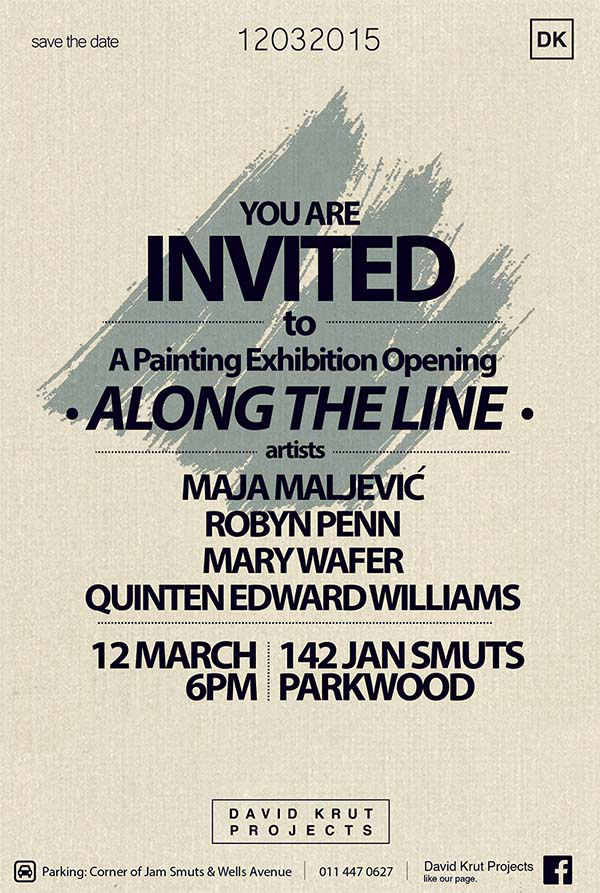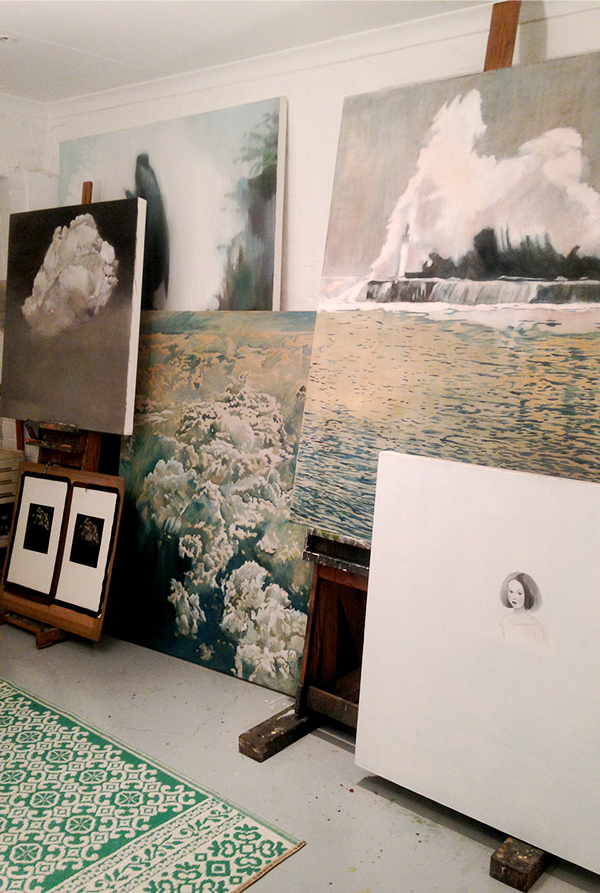Along the Line
Artist talk @ David Krut Projects | 12 March 2015
In these paintings I am interested in line. It is an organic drawn line, a narrative and metaphoric line. Fragmenting a cloud and the ocean into a series of hatched and broken lines seems to defy the fluid nature of both cloud and ocean and yet the lines merge and form the things they describe. Although the work is figurative, I am not interested in photo-realistic representations; rather, I am interested in the idea of and ambiguity of sky, cloud, ocean and surface. A sort of simultaneously sublime and real contention of the elusive space in which we live. Glaciers are calving, oceans are rising, the order we humans’ have tried to impose on the natural world is unraveling.
I am interested in Magritte’s ideas about the treachery of images, when our models of reality become confused with reality itself. I am interested in the persistence of memory – a line which streches back in time.
Foucault wrote about the idea of utopia’s and heterotopia’s. He discribes a utopia as fundamentally unreal space which represents society in a perfected form. And a heterotopia as a real thing, like a mirror, which contains a space that is virtual. In this way, a sheet of paper is a heterotopia because it is a real thing which has the potential to contain whole worlds; it is liminal because its surface is a threshold for what is imprinted on it.
In Cloud over mountain landscape, the mountain landscape appears to be erased and replaced by the unraveled knitting. There is a confusion of lines and text from the pages of a Fiat car manual. I drew influence from the work of Ando Hiroshige who worked in the Edo period. He is hailed the last of the great Edo artists before the influence of the West marked a rapid decline in Ukiyo-e work in Japan. Hiroshige’s work had significant influence on western artists. The painting, To Fix the image in memory, takes as its subject the artist’s daughter on the threshold of becoming a teenager. I try to fix the nebulousness in the delicate face. The girl is a still, contemplative sketched fragment, a bust, floating on a sheet of graph paper. The painting challenges the confines of oil paint on canvas in attempting to remain as lighthearted as an ink drawing on paper, retaining a freshness of surface that is not overworked despite the madness in the rendition of the quadrille paper in oils. I drew influence from Velasquez’s Portrait of a little girl and Japanese Ukiyo-e prints.

